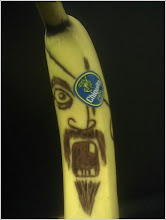Have I Got News For You
Have I Got News For You is a British television panel Quiz show produced by Hat Trick Productions for the BBC, it is a Long-running topical panel game with a strong political slant, featuring team captains Ian Hislop and Paul Merton, it is based loosely on the BBC Radio 4 show The News Quiz, and has been running since 1990. The show is themed on mocking the latest News and politics with a humorous and light-hearted approach. It is a comedy programme rather than a serious game show and the banter between the guests and their comedic remarks are more important than the scores, which are hardly ever referred to and are not really taken into account.The introduction of the show is a series of news paper style political cartoons which tie in with the theme and the format of the show. After this sequence the viewers are cut to a wide shot of the set, which then zooms into a Mid-shot of the host. A mid-shot is used to show some part of the subject in more detail whilst still giving an impression of the whole subject and its environment. During the wide-shot we can see the size and depth of the studio; we can also see an over head view of the audience and auto-cue. From the opening wide-shot we can also see that the studio is about 15 metres across and 20 metres deep. Allowing the TV viewers to see the whole set in the opening sequence, really helps deliver the theme and atmosphere of the show.
The set is designed using reds and purples with cut up news paper headlines and caricatures of political personalities. In the opening pan, the title of the show is displayed across the boards of the set; which then rotate. Also at this point, the lights are all dimmed. The lights then light up to highlight the host and the contestants, this is done to make the host and contestants have a dominant presence to the set.
The contestants each have fixed clip-on microphones attached at there collars to allow the audience and the viewers at home to hear them. The clip-on microphones are typical of a quiz show like ‘Have I Got News for You’. The microphones would usually be linked up to a sound and audio mixer, through which the sound will be adjusted to levels suitable for broadcast.
The shape and texture of the set design allows flexible camera angles between contestants and the host. The contestants are sat in teams of two, both with space for movement and their individual medium close-ups (MCU’s).
The show is captured using five fixed cameras and one tracking. The show is shot using a mixture of mainly mid-shots and 2-shots; a 2-shot shows some part of the subject in more detail whilst still giving an impression of the whole subject and its surroundings. It is probable that there is a camera for each team with an extra for shots of individuals. The host also has his own camera, plus the one that tracks in at the beginning of the show to capture the wide shot of the set. The camera that captures the opening wide-shot is probably on a jib. In cinematography, a jib is a boom device with a camera on one end, and a counterweight and camera controls on the other. It operates like a see-saw, but with the balance point located close to the counterweight, so that the camera end of the arm can move through an extended arc. A jib permits the camera to be moved vertically, horizontally, or a combination of the two. A jib is often mounted on a tripod or similar support.
Mise-en-scène is an expression used in theatre and film to describe the design aspects of a production. The Mise-En-Scene of the show is mainly a gradient of purple/blue and red, this fits in with the comical aspect of the show and gives it a warm, light-hearted approach. The newspaper cut outs have a blue transition over them to match the set design and make them less prominent. The colours used in the set give the show a comfortable and interesting texture to make it more attractive to the viewers mat home and the audience it also enhances the power of the show and brings to light that the show has a reputation for sailing close to the wind in matters of libel with its satirical, light-heartedness.
Monday, 25 January 2010
Subscribe to:
Comments (Atom)
